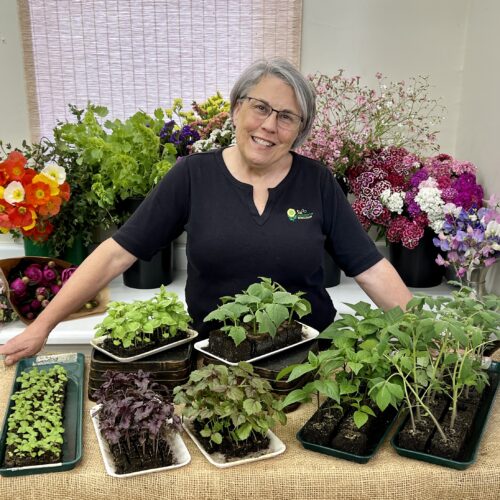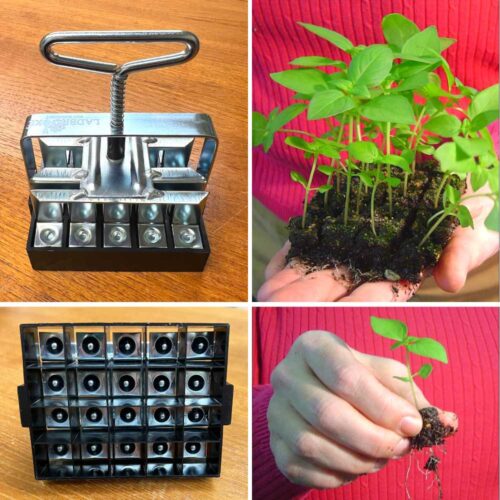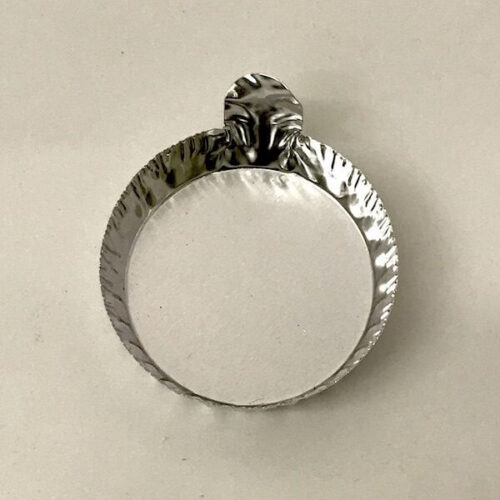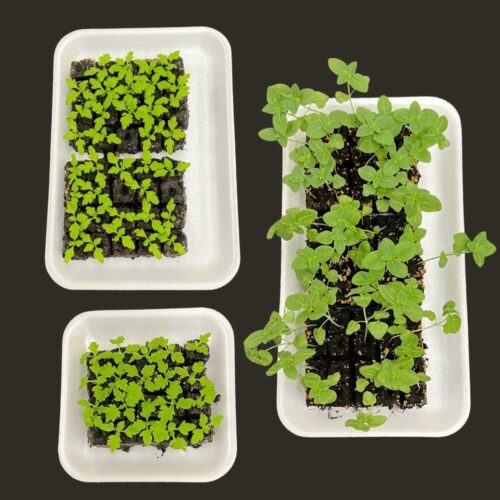Farming Survival Guide
I am going to share some of the habits I’ve gotten into during the no-harvest season. They prepare me to survive and even thrive during the crazy harvest season. I’ve come by these lessons mostly the hard way, but they have increased the joy and bottom line in both my farming career and my personal life.
The foundation habit for me is to structure my winter down time just like I do the busy times in high season. Without some kind of schedule, winter used to just disappear and it was suddenly spring again. I am a creature of habit and once a task is on the list and works into my week, you can count on it. Discovering this was a game changer! Of course, the to-do list must be a realistic one. I may think I’m superwoman from time to time, but the undone tasks at the end of a day reveal the truth. Keep it real–you can only do so much.
At the top of my winter to-do list is the crucial question: when am I going to take a break? Yes, I plan this and it makes it even better! The anticipation fuels my fire to get the other stuff done. I plan a vacation with Steve, and at least one other week I’ll share with my dog Babs in lazy bliss watching our favorite movies. These are the moments I dream of while harvesting on blistering July days.
And then there are the chores. I always tackle my least favorite one first to get it out of the way. I start by looking over my QuickBooks sales records while the season is fresh in my memory. What were the best sellers? What did we have left over? Any surprises? What could I have sold more of? Using that information, I proceed to plan what I want to grow next season, how much space I can give each flower, and what my rotation/succession plan is going to be. Then I get down to the business of laying it all out on the jumbo calendar.
I use a wall-hung jumbo at-a-glance calendar (each day’s square is 2” x 4”). It goes on the entrance door of the work building. I write my plans on that and also make notes on it during the year. This way, all plans and records are in one place. That jumbo calendar has really improved my record-keeping. It is a great place to jot down new things I want to grow, when we began harvesting a specific flower, when we mowed a crop, etc. I use the calendars from past years as a guide while planning for the year to come.
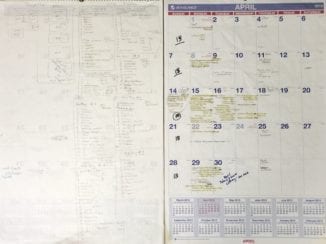 The jumbo calendar that runs my farm. I often use the backside of the calendar for bed planning.
The jumbo calendar that runs my farm. I often use the backside of the calendar for bed planning.
The seed-starting schedule is first to go on this calendar. Then I add all the other in-season chores. I pencil in when I should place seed and supply orders, when beds should be ready for planting, when I should plant cover crops, and more. This calendar is the brain of our operation, you might say. I tend to become like a zombie once the heat starts. The calendar points me in the direction I need to go each day. As long as my eyes are open with glasses on, all is right in my little farming world. No thinking required in season–very dreamy, actually.
Once the calendar is done, I move onto the next biggest thorn in my side during the season– what’s for supper? If it was just me, Cheerios would work most nights; however, the hard- working man in my house needs more. My off-season goal is to fill my freezer with 2-3 meals per week that I can use in the busy season. My classic dilemma has been suddenly thinking of dinner as I’m walking to the house dead tired after working all day.
My solution is to think of them all during a couple of weeks in February. My standards aren’t too high–it just has to be something I can pull out of the freezer at the last minute and have ready in a short time. My easy fixes–spaghetti sauce, rib-eye steaks, minute steaks (for sandwiches), chicken breast fillets (salad topper), pie shells for weekly tomato pies and chicken pot pies, cooked ground beef for shepherd pies, and ready-made hamburger patties. I purchase a quarter cow and have them package according to our need. A couple nights a week we go for big salads and seafood.
It really makes the whole work day better if you don’t have to think about how the day will end for you and your family. A hidden bonus is that when I have options in the freezer, Steve is likely to have supper ready when I come indoors. That’s reason enough to think ahead in February!
During the summer season, I have a pretty structured week. I work Monday thru Friday, never Sunday and only rarely on Saturday. My typical work day begins at 6am and ends by 2-5pm. I owe all this to thinking it through in the downtime. Lots of farm fixes come when your head is free of flower orders, weather challenges, and deer.
Seed-starting used to be a task that often fell through the cracks. Then I got the great idea of hiring a niece to do the regular seed-starting that is essential to a steady flow of flowers. Amazing how smart we are in winter.
I love flower farming because it is all-consuming. But to make it the long haul career of your dreams, you can’t crash, burn and just recover each winter. You need to go into farm survival mode.
May your winter months be full of good times, rest, planning and brain work!
Lisa Mason Ziegler is a commercial cut-flower farmer in Newport News, Virginia; she lectures and writes about organic and sustainable gardening. Lisa is the Mid-Atlantic Regional Director of the ASCFG. You can email Lisa at [email protected], call her at 757-877-7159 or visit her website www.shoptgw.com.
Like us on Facebook and keep up with the farm!

